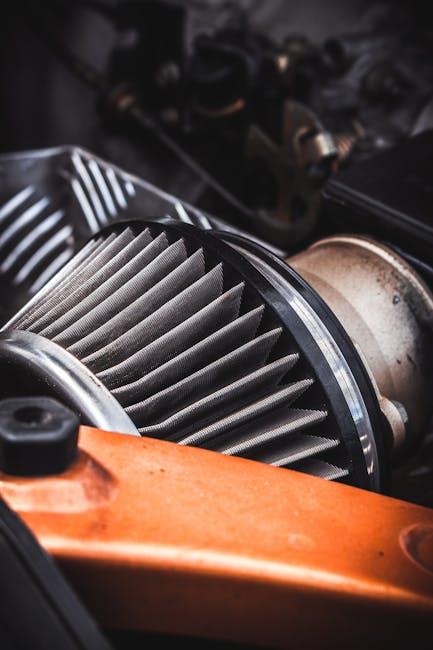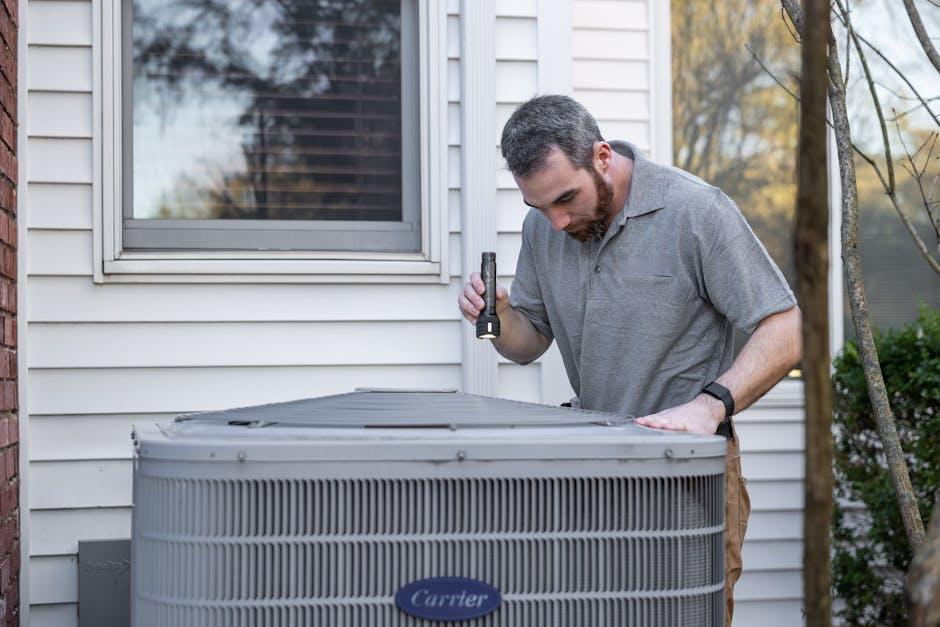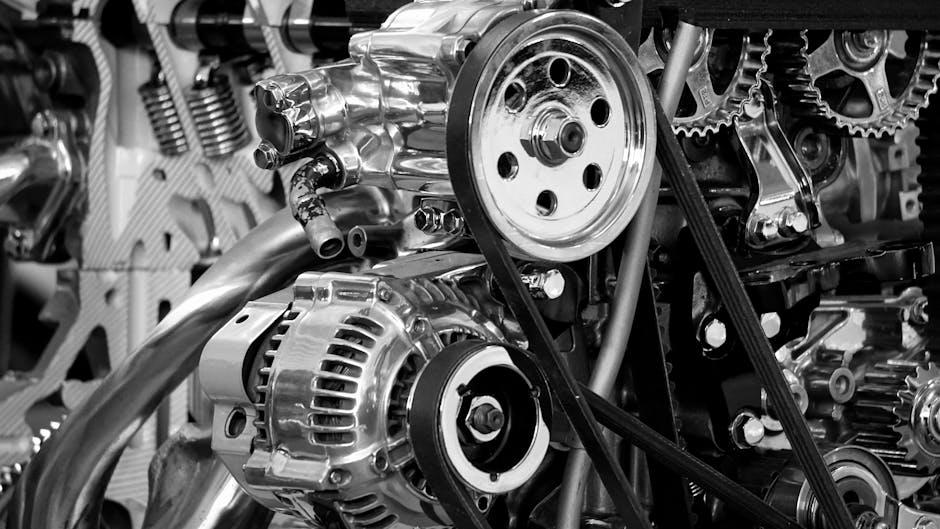Imagine the seamless glide of a well-tuned transmission, where each gear change feels like a carefully choreographed dance rather than a clunky jolt. For drivers, that smooth shift isn’t just a pleasure—it’s a sign of a healthy vehicle, ready to perform on every journey. Maintaining a transmission in peak condition requires more than occasional check-ups; it demands attentive care and understanding of this critical component. In this article, we’ll explore practical steps and tips to keep your transmission shifting effortlessly, prolonging its life and ensuring your driving experience remains fluid mile after mile.
Table of Contents
- Choosing the Right Transmission Fluid for Optimal Performance
- Signs Your Transmission Needs Attention Early
- Step-by-Step Guide to Checking Transmission Fluid Levels
- The Importance of Regular Transmission Filter Replacement
- Tips for Avoiding Transmission Overheating
- When to Seek Professional Transmission Service and Repairs
- Q&A
- Closing Remarks

Choosing the Right Transmission Fluid for Optimal Performance
The right transmission fluid acts as the lifeblood of your vehicle’s transmission system, ensuring every gear shift is seamless and efficient. Selecting the fluid based on your car’s specific requirements is crucial; overlooking this can lead to premature wear, overheating, or even transmission failure. Manufacturers often recommend fluids with specific viscosity ratings and additive packages designed to optimize performance under varying driving conditions.
When choosing your transmission fluid, consider the following factors to maintain optimal functionality:
- Type of Transmission: Automatic, manual, or CVT transmissions each demand fluids tailored to their operational design.
- Environmental Conditions: Fluids with enhanced thermal stability perform better in extreme temperatures.
- OEM Specifications: Always consult your vehicle’s manual for approved fluid types and standards.
| Fluid Type | Best For | Key Feature |
|---|---|---|
| Dexron/Mercon | Most Automatic Transmissions | Reliable friction modification |
| CVT Fluid | Continuously Variable Transmissions | Enhanced belt protection |
| Manual Transmission Oil | Manual Gearboxes | High shear stability |

Signs Your Transmission Needs Attention Early
Noticing that your vehicle hesitates, surges, or slips between gears is an early warning that the transmission is crying out for some care. Unusual noises like grinding or whining, coupled with a burning smell, can signal internal wear or overheating. Even if these symptoms seem minor, addressing them quickly can prevent costly repairs down the line. Keep an eye out for jerky or delayed gear changes, as these often hint at fluid issues or component damage that need immediate evaluation.
Below is a quick reference table highlighting common early signs and their possible causes, so you can know when to schedule a professional check-up:
| Symptom | Potential Cause | Recommended Action |
|---|---|---|
| Fluid Leaks | Worn seals or gaskets | Inspect and replace seals promptly |
| Delayed Engagement | Low or contaminated fluid | Flush and refill transmission fluid |
| Gear Slippage | Worn clutch or bands | Consult a professional mechanic |
| Burning Smell | Overheating transmission fluid | Check fluid levels and cooling system |
- Be proactive: Don’t ignore subtle shifts that feel off.
- Check fluid regularly: Healthy fluid is the lifeblood of smooth shifting.
- Schedule early diagnostics: Detecting trouble early saves time and money.

Step-by-Step Guide to Checking Transmission Fluid Levels
Begin by parking your vehicle on a level surface and ensuring the engine is warm, as this provides the most accurate fluid level reading. Open the hood and locate the transmission fluid dipstick, typically marked with a bright handle. Pull the dipstick out, wipe it clean with a lint-free cloth, then reinsert it fully before pulling it out once again to check the fluid level. Inspect the markings carefully; the fluid should fall between the “Full” and “Add” lines. If the fluid is below the recommended level, it’s time to add more transmission fluid, but be sure to use the type specified in your owner’s manual to avoid damage.
- Ensure the engine is idling and warm before checking.
- Use a clean rag to wipe the dipstick.
- Check fluid color and consistency – it should be bright red and free of debris.
- Add fluid slowly, checking levels frequently to avoid overfilling.
| Transmission Fluid Color | Condition | Recommended Action |
|---|---|---|
| Bright Red | Healthy and clean | Normal maintenance |
| Brown/Black | Old or burnt | Replace the fluid ASAP |
| Milky | Contaminated with water | Seek professional flush |

The Importance of Regular Transmission Filter Replacement
Keeping your transmission filter fresh is crucial in prolonging the life and efficiency of your vehicle’s transmission system. Over time, tiny metal particles, dirt, and other debris accumulate in the filter, restricting the smooth flow of transmission fluid. This build-up can lead to increased friction and overheating, eventually causing premature wear and costly repairs. Replacing the filter at regular intervals ensures that contaminants are effectively trapped, promoting seamless gear shifts and consistent performance.
Beyond just maintaining fluid cleanliness, a well-functioning transmission filter helps preserve the hydraulic pressure needed for precise gear changes. Neglecting this maintenance step can cause sluggish responses, slipping gears, or even complete transmission failure. To keep your vehicle shifting effortlessly, consider these key benefits of timely filter replacement:
- Enhanced Transmission Longevity by preventing abrasive particles from circulating
- Improved Fuel Efficiency through smoother, quicker gear transitions
- Reduced Risk of Overheating by maintaining proper fluid flow
- Lower Repair Costs by avoiding severe transmission damage
| Replacement Interval | Transmission Type | Condition Indicator |
|---|---|---|
| Every 30,000 miles | Automatic | Dark fluid, rough shifts |
| Every 60,000 miles | Manual | Clutch slipping, delayed engagement |

Tips for Avoiding Transmission Overheating
Keeping your transmission cool is essential for long-term performance and reliability. Overheating not only causes premature wear of components but can lead to costly repairs. To minimize heat buildup, avoid prolonged idling and reduce heavy loads like towing or carrying extra weight whenever possible. Additionally, installing an auxiliary transmission cooler can help maintain optimal temperatures during intense driving conditions by improving heat dissipation significantly.
Simple driving habits can make a big difference as well. Here are some effective ways to keep temperatures in check:
- Shift gently: Avoid aggressive acceleration and sudden gear changes.
- Monitor fluid levels: Low or dirty transmission fluid can cause overheating.
- Regular maintenance: Schedule fluid changes and inspections to catch issues early.
| Cause | Effect on Transmission | Recommended Action |
|---|---|---|
| Overloading | Excessive heat buildup | Limit towing/cargo weight |
| Low fluid level | Internal friction increases | Top up or replace fluid |
| Frequent stop-and-go | Fluid overheating | Install auxiliary cooler |

When to Seek Professional Transmission Service and Repairs
Experiencing sudden changes in how your vehicle shifts gears often signals that it’s time to consult a professional. If you notice delayed engagement, harsh shifting, or slipping gears, these symptoms indicate internal transmission issues that require expert diagnosis. Ignoring these signs can lead to further damage and costly repairs, so timely intervention is crucial for preserving transmission health.
Additionally, if you observe any of the following, schedule a transmission inspection without delay:
- Fluid leaks: Puddles of reddish transmission fluid beneath your car.
- Unusual noises: Grinding or clunking sounds when changing gears.
- Warning lights: Transmission or check engine light appearing on the dashboard.
- Burning smell: Overheated transmission fluid can emit a burnt odor.
| Symptom | Possible Cause | Recommended Action |
|---|---|---|
| Slipping Gears | Worn clutch plates or bands | Visit a mechanic immediately |
| Rough Shifts | Faulty sensors or low fluid | Check fluid level, schedule service |
| Fluid Leak | Damaged seals or gaskets | Inspect and repair seal leaks |
Q&A
Q&A:
Q1: Why is maintaining a smooth-shifting transmission important?
A1: A smooth-shifting transmission ensures optimal vehicle performance, prolongs the lifespan of your car’s gearbox, and provides a comfortable driving experience. Neglecting it can lead to costly repairs and unsafe driving conditions.
Q2: How often should I check my transmission fluid?
A2: It’s best to check your transmission fluid at least once every 30,000 to 60,000 miles or as specified in your vehicle’s owner manual. Regular checks help catch fluid degradation or leaks before serious issues develop.
Q3: What does transmission fluid do, and why is it essential?
A3: Transmission fluid lubricates the gears, cools the transmission, and provides hydraulic pressure for smooth gear shifts. Old or low fluid can cause slipping, rough shifts, or complete transmission failure.
Q4: Can I use any transmission fluid, or should I stick to a specific type?
A4: Always use the type of transmission fluid recommended by your vehicle manufacturer. Using the wrong fluid can impair function and damage internal components.
Q5: Are there signs that my transmission needs attention?
A5: Yes. Common signs include delayed shifts, grinding noises, unusual smells (like burning), fluid leaks, and warning lights on your dashboard.
Q6: Should I consider flushing or just changing my transmission fluid?
A6: Transmission fluid changes are typically sufficient for regular maintenance. Flushing is more intensive and should be done cautiously and only if recommended by your mechanic, as it can dislodge debris and cause problems in older transmissions.
Q7: Does my driving style affect transmission health?
A7: Absolutely. Aggressive acceleration, frequent towing, and harsh shifting can strain your transmission. Gentle driving helps maintain smooth operation and prolongs transmission life.
Q8: Is it necessary to have the transmission serviced professionally?
A8: While some basic maintenance like fluid checks can be done at home, professional service is recommended for inspections, fluid changes, and repairs to ensure the transmission is properly maintained.
Q9: How do I prevent transmission overheating?
A9: Avoid heavy towing beyond your vehicle’s capacity, keep transmission fluid levels adequate, and install an auxiliary transmission cooler if you frequently tow or drive in hot conditions.
Q10: What is the key takeaway for maintaining a smooth-shifting transmission?
A10: Consistent care—regular fluid checks, using correct fluids, mindful driving, and timely professional service—keeps your transmission shifting smoothly, safeguarding your vehicle’s performance and your peace of mind.
Closing Remarks
Maintaining a smooth-shifting transmission is more than just a routine—it’s an ongoing dialogue between you and your vehicle, ensuring every gear change feels seamless and sure. By incorporating these simple yet effective practices into your maintenance routine, you not only extend the life of your transmission but also enjoy a driving experience that’s consistently smooth and responsive. Remember, your transmission is the heart of your car’s performance; treat it with care, and it will keep shifting gears—and your journeys—into the perfect rhythm.

